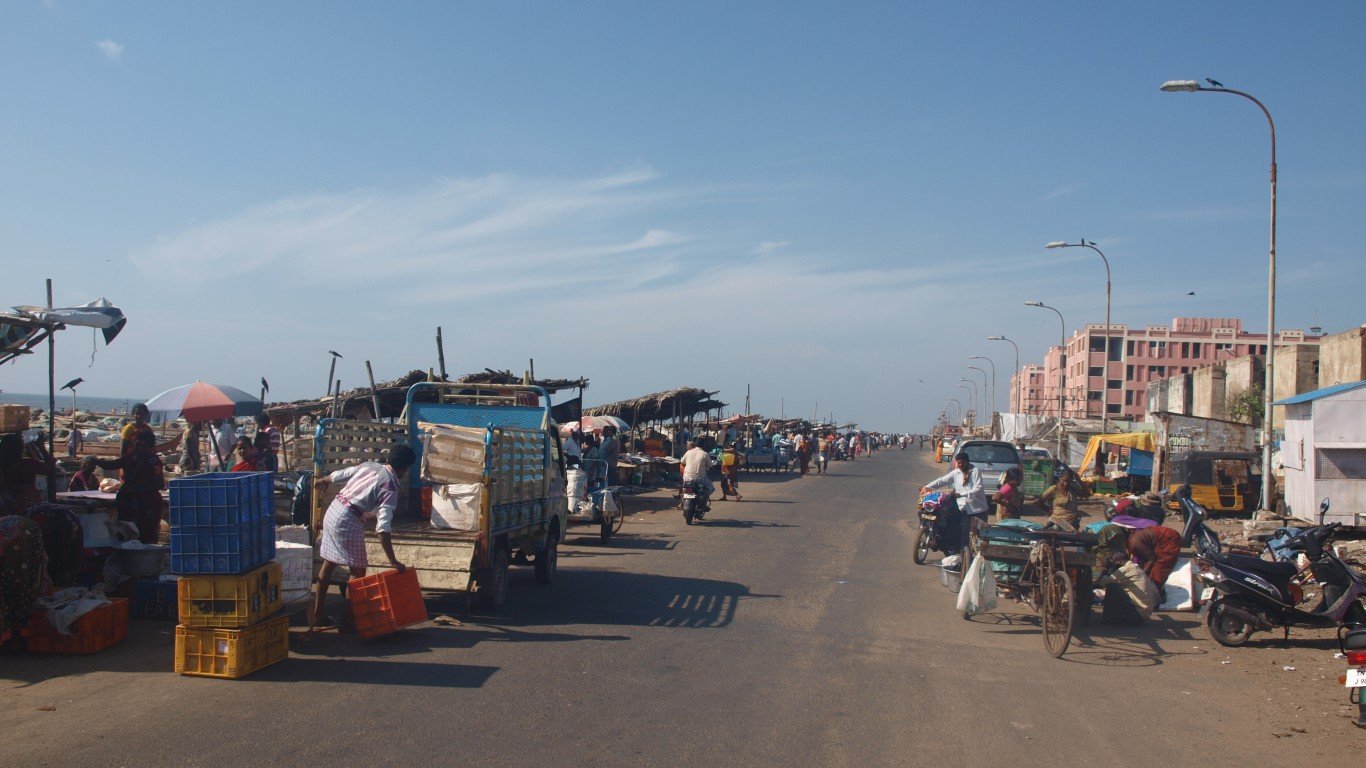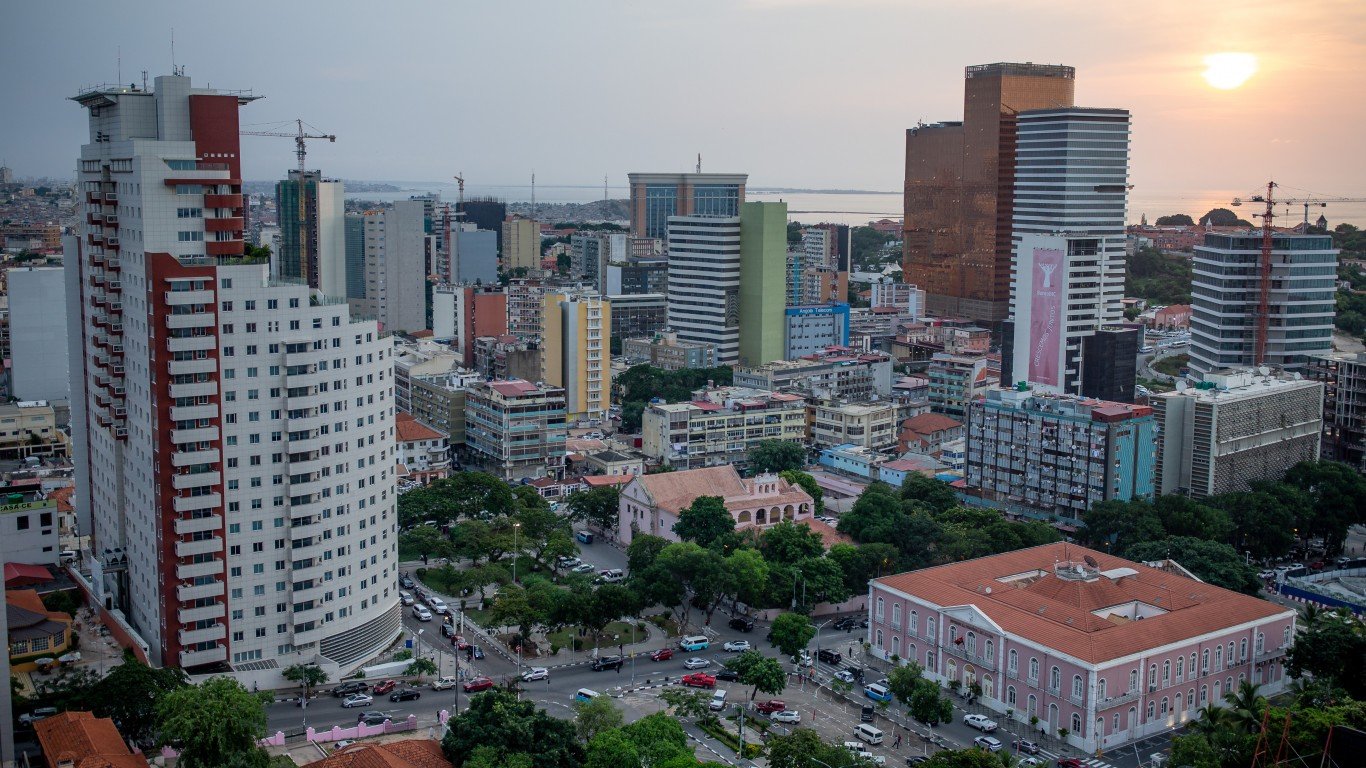
15. Luanda, Angola
> Est. population, 2050: 14.6 million, 62% growth from 2022
> Ecological threat level: 5 – Extremely High
> Air quality: 5 – Hazardous
> Expected climate changes: Wetter
> Global peace index (1-5, most to least): 2.41 – Low Peace
> Estimated GDP in 2020: $29 billion
Oil-rich Angola’s capital city is among six African urban areas facing profound ecological threats amid low peace levels. Luanda is smaller by population than the continent’s largest cities, like Lagos and Kinshasa, but it is encountering a rapid rate of urbanization, especially since the end of Angola’s civil war in 2002, and is projected to become a megacity by 2050. As a coastal city, Luanda is on the front line of rising sea levels. Luanda Bay and Mussulo Lagoon are increasingly polluted, harming important local ecosystems.
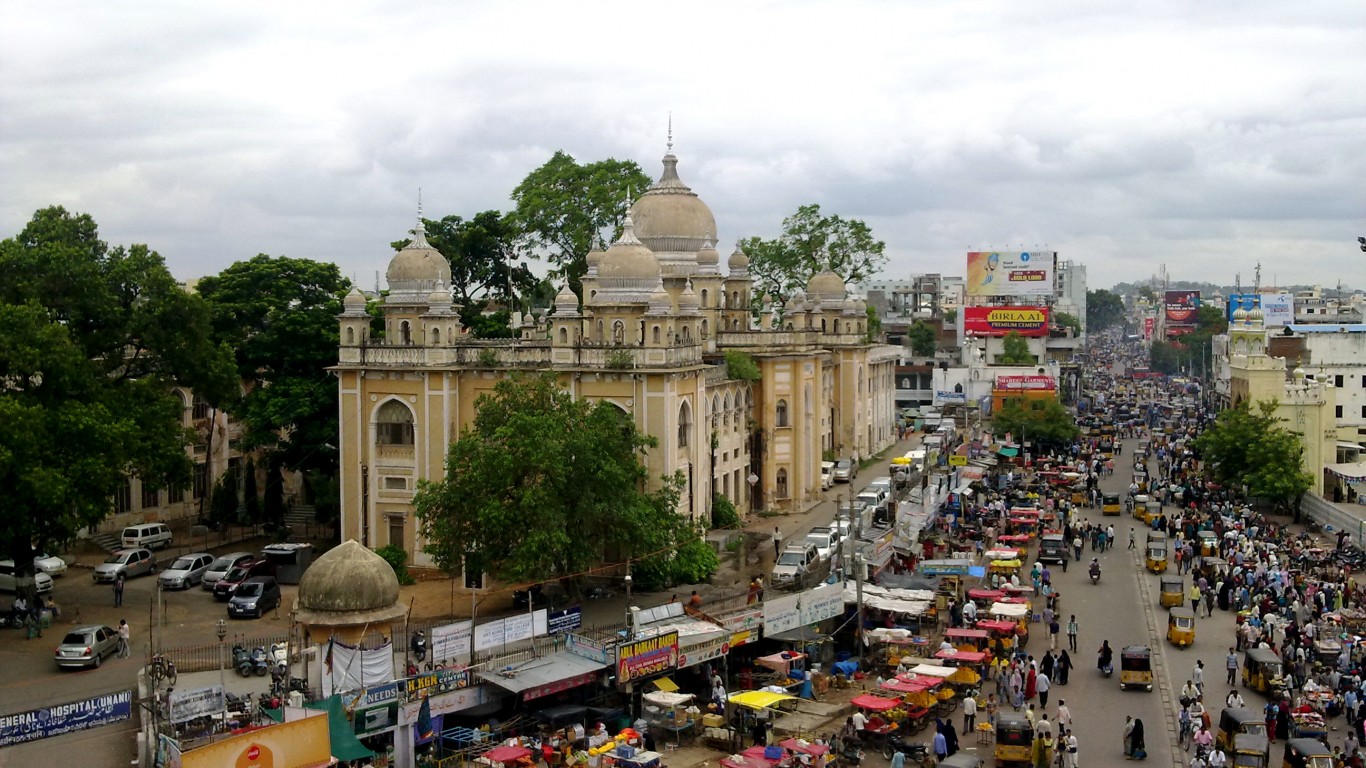
14. Hyderabad, India
> Est. population, 2050: 16.2 million, 54% growth from 2022
> Ecological threat level: 4 – High
> Air quality: 3 – Unhealthy
> Expected climate changes: Wetter, hotter
> Global peace index (1-5, most to least): 2.78 – Very Low Peace
> Estimated GDP in 2020: $92 billion
India’s fourth-largest city by population, located in the south-central region of the subcontinent, suffers from groundwater contamination from its sizable chemical and pharmaceutical industries. Its local lakes receive industrial effluents and untreated sewage. Municipal waste winds up polluting the city’s soils and many of the area’s artificial and natural lakes have dried up.
As with other megacities in the Global South, Hyderabadians inhale harmful pollutants from industrial and vehicle emissions.
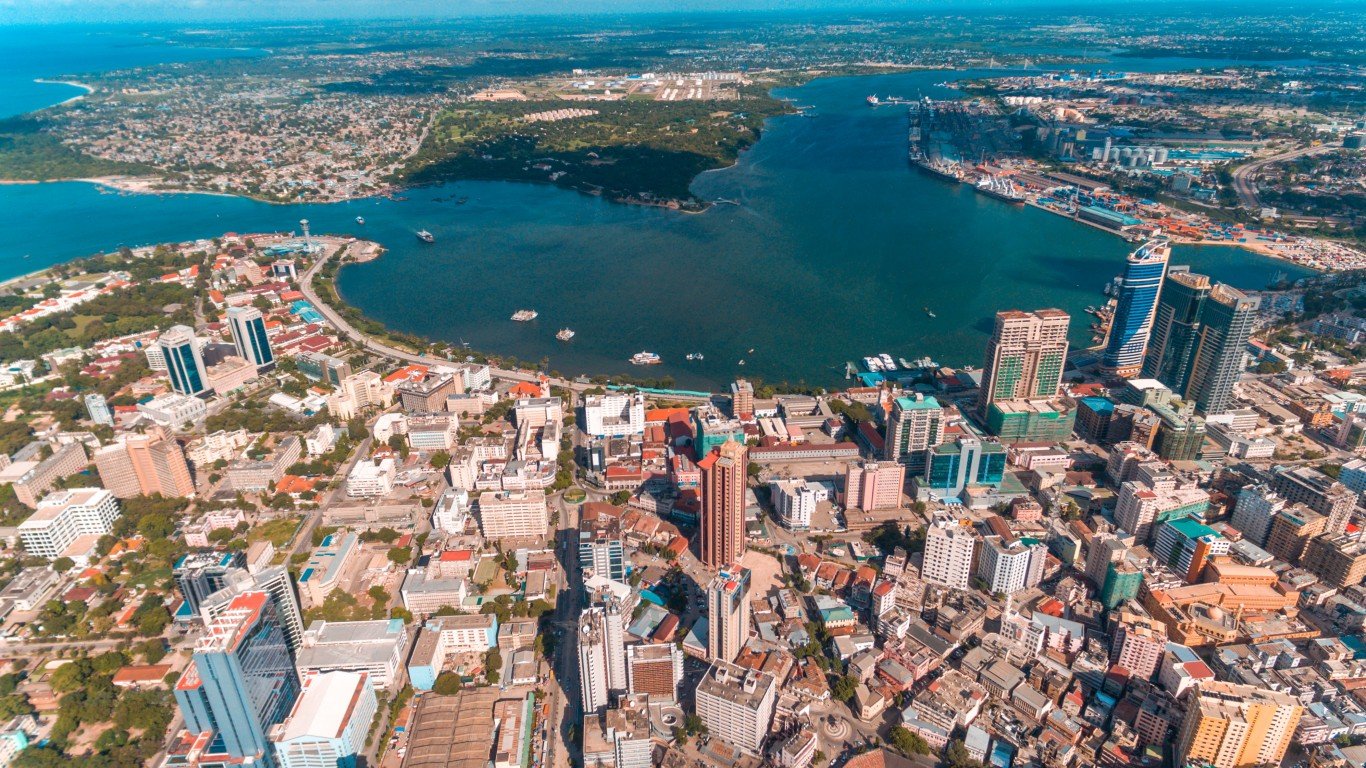
13. Dar es Salaam, Tanzania
> Est. population, 2050: 16.4 million, 118% growth from 2022
> Ecological threat level: 5 – Extremely High
> Air quality: 2 – Unhealthy for Sensitive Groups
> Expected climate changes: Wetter
> Global peace index (1-5, most to least): 2.41 – Low Peace
> Estimated GDP in 2020: $13 billion
Dar es Salaam is one of six African cities on this list. Though it is not among the continent’s largest cities, yet, its high population growth poses extreme developmental challenges. Though it is not a megacity yet, it projected to reach that status by 2050.
The urban area’s poor air quality is caused by industrial and residential burning of fossil fuels, and is being exacerbated by a rapid increase in the number of vehicles. Only about 40% of its solid waste is properly collected, and only about 5% of the city’s population is connected to municipal sewage systems, based on 2013 estimates.
12. Chennai, India
> Est. population, 2050: 17.8 million, 54% growth from 2022
> Ecological threat level: 4 – High
> Air quality: 2 – Unhealthy for Sensitive Groups
> Expected climate changes: Wetter
> Global peace index (1-5, most to least): 2.78 – Very Low Peace
> Estimated GDP in 2020: $91 billion
The southeastern coastal city of Chennai is one of five Indian cities on this list. The sixth most populous urban area of the country suffers from industrial water contamination, notably in the Kosasthalaiyar river, a major source of the city’s water supply. Much of the city’s solid waste is not separated, causing its landfills to leach toxins into the soil and underground aquifers. At times, Chennai’s air quality can be worse than Delhi’s notorious smog.
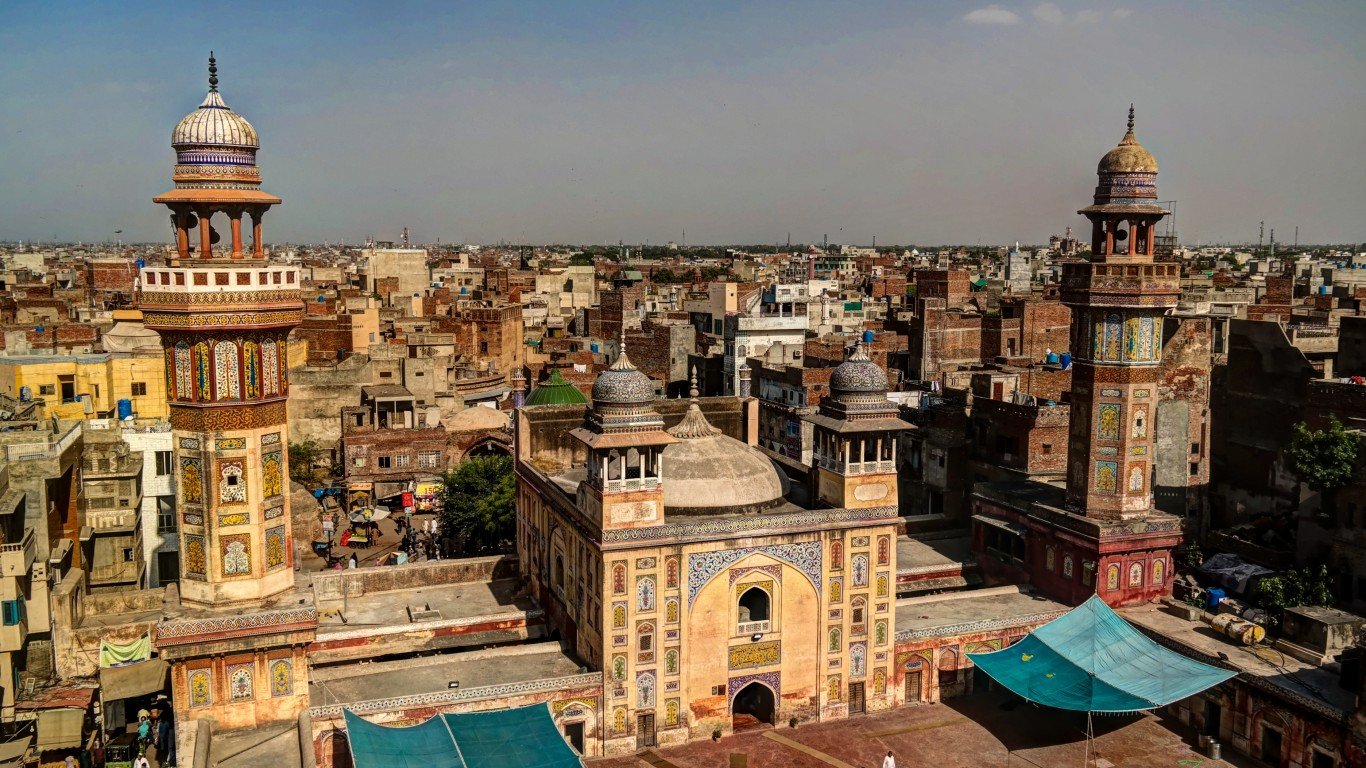
11. Lahore, Pakistan
> Est. population, 2050: 21.4 million, 57% growth from 2022
> Ecological threat level: 4 – High
> Air quality: 3 – Unhealthy
> Expected climate changes: Hotter
> Global peace index (1-5, most to least): 3.05 – Very Low Peace
> Estimated GDP in 2020: $67 billion
Lahore is the second largest city and urban area in Pakistan after Karachi. About 12% of the country’s roughly 225 million people live in the urban areas of these two cities. The massive influx of people has far outpaced the country’s ability to meet developmental needs. The amount of hazardous fine particulate matter in the atmosphere, emitted from vehicles, industrial activity, and the burning of wood and trash, routinely exceeds 40 times the World Health Organization’s guidelines, especially during “smog season” in the winter months.
